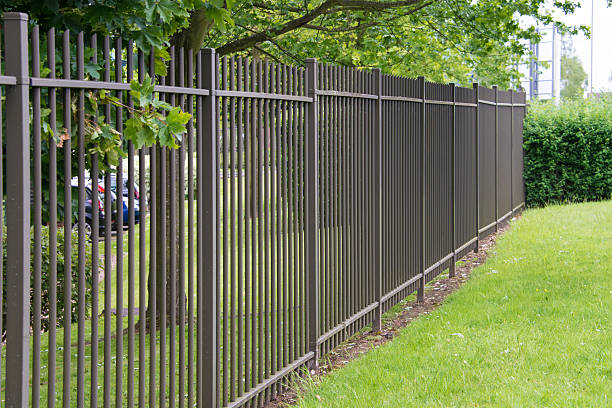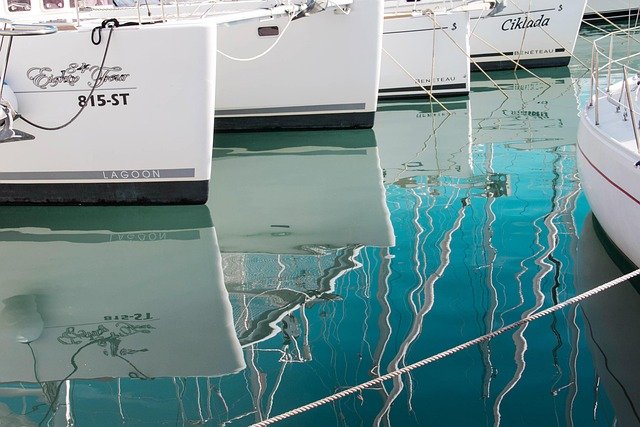Learn More About Metal Fencing Solutions - Read the Guide
Metal fencing has become a popular and reliable choice for both residential and commercial properties due to its durability, versatility, and long-term resilience. When exploring metal fencing solutions, it’s important to understand the range of options available, how they differ in functionality, and which type aligns best with specific security, aesthetic, or budget needs. Among the most commonly used materials are steel, aluminum, wrought iron, and chain-link, each offering different levels of strength, maintenance requirements, and design flexibility. Steel fencing is often chosen for its robust nature and ability to provide strong security, making it a preferred solution for industrial sites and high-security environments. Aluminum fencing, on the other hand, is lightweight, corrosion-resistant, and ideal for residential use, especially in areas prone to moisture or coastal conditions where rust could be an issue.

Metal fencing offers a durable and attractive solution for property owners seeking long-lasting perimeter protection. From aluminum and steel to wrought iron and chain link, each material brings unique benefits and considerations. This guide explores the essential aspects of metal fencing, helping you navigate options, understand costs, and choose the right installation partner for your project.
What Are the Main Types of Metal Fencing Materials?
Metal fencing encompasses several material options, each suited to different applications and aesthetic preferences. Aluminum fencing provides a lightweight, rust-resistant option that works well in coastal or humid environments. It requires minimal maintenance and comes in various styles that mimic traditional wrought iron at a lower cost. Steel fencing offers superior strength and durability, making it ideal for high-security applications or areas requiring robust barriers. Galvanized or powder-coated steel resists corrosion and maintains its appearance over time. Wrought iron fencing delivers classic elegance and exceptional strength, though it requires regular maintenance to prevent rust. Chain link fencing, made from galvanized steel wire, provides an economical and functional solution for large areas, sports facilities, and industrial sites. Each material has distinct advantages in terms of strength, maintenance requirements, appearance, and longevity.
Essential Tips for Choosing the Best Fence Company Near Me in 2025
Selecting a qualified fence installation company requires careful evaluation of several factors. Start by verifying proper licensing and insurance coverage, which protects you from liability during installation. Research company reputation through online reviews, testimonials, and references from previous clients. Experienced companies should provide detailed written estimates that itemize materials, labor, and any additional costs. Ask about warranty coverage on both materials and workmanship, as reputable providers stand behind their installations. Inquire about the installation timeline and whether the company handles permit applications and compliance with local regulations. Local service providers often have better knowledge of regional building codes and weather considerations that affect fence performance. Compare multiple quotes to understand market rates, but be cautious of significantly low bids that may indicate inferior materials or workmanship. A reliable company will conduct an on-site assessment, discuss your specific needs, and offer professional recommendations based on your property characteristics and intended use.
How Do Metal Fencing Costs Compare Across Different Materials?
Understanding the cost structure of metal fencing helps you budget appropriately and make value-based decisions. Pricing varies significantly based on material type, fence height, style complexity, and installation requirements. Linear foot pricing typically includes materials and basic installation, while additional costs may apply for gates, decorative elements, or challenging terrain.
| Material Type | Average Cost per Linear Foot | Typical Lifespan | Maintenance Level |
|---|---|---|---|
| Chain Link | $8 - $18 | 15-20 years | Low |
| Aluminum | $20 - $35 | 20-30 years | Very Low |
| Steel | $25 - $45 | 25-40 years | Moderate |
| Wrought Iron | $30 - $60 | 50+ years | High |
| Ornamental Steel | $35 - $70 | 30-50 years | Moderate |
Prices, rates, or cost estimates mentioned in this article are based on the latest available information but may change over time. Independent research is advised before making financial decisions.
Installation costs represent a significant portion of total project expenses, typically ranging from 30 to 50 percent of material costs. Factors affecting installation pricing include soil conditions, property slope, removal of existing fencing, and accessibility. Gate installations add $300 to $1,500 depending on size and automation features. Permit fees, when required, generally range from $50 to $200 based on local jurisdiction requirements.
What Maintenance Does Metal Fencing Require?
Metal fencing maintenance requirements vary by material but generally involve less upkeep than wood alternatives. Aluminum fencing needs occasional cleaning with soap and water to remove dirt and debris, with no painting or sealing required. Steel and wrought iron fencing benefit from annual inspections for rust spots, which should be addressed promptly with wire brushing and touch-up paint. Applying a protective coating every few years extends the life of steel fencing in harsh environments. Chain link fencing requires minimal maintenance beyond periodic cleaning and checking for damaged sections or loose hardware. Regular inspection of all metal fences should include examining posts for stability, checking fasteners for tightness, and ensuring gates operate smoothly. Lubricating hinges and latches annually prevents binding and extends hardware life. Vegetation management around fence lines prevents moisture accumulation and reduces the risk of corrosion.
Explore Durable Metal Fencing Information for Security Applications
Metal fencing excels in security applications due to its strength and deterrent value. High-security installations often combine tall steel or wrought iron fencing with features like anti-climb designs, pointed finials, and narrow spacing between pickets. Commercial and industrial properties frequently use welded wire mesh or ornamental steel with enhanced height specifications to prevent unauthorized access. Residential security fencing balances protective features with aesthetic considerations, using materials like aluminum or steel with decorative elements that complement architectural styles. Adding security enhancements such as automated gates, access control systems, or surveillance integration increases protection while maintaining convenience. The visibility provided by metal fencing allows property monitoring while establishing clear boundaries. When selecting metal fencing for security purposes, consider fence height regulations in your area, as most jurisdictions limit residential fence heights to six feet without special permits. Professional installation ensures proper anchoring and structural integrity critical for security effectiveness.
How Does Metal Fencing Perform in Different Weather Conditions?
Metal fencing performance varies based on material composition and protective treatments. Aluminum naturally resists corrosion through oxidation, making it excellent for coastal regions with salt air exposure. Galvanized steel fencing withstands harsh weather through a zinc coating that prevents rust formation. Powder-coated finishes on steel and aluminum provide additional protection against UV degradation and moisture penetration. Wrought iron requires protective paint or coating to prevent rust in humid or rainy climates. Extreme temperature fluctuations cause minimal structural issues with properly installed metal fencing, as materials expand and contract within acceptable tolerances. Wind resistance depends on fence design, with solid panel styles experiencing greater wind loads than open designs like chain link or ornamental styles. Snow and ice accumulation generally pose no structural concerns for metal fencing, though decorative elements may collect debris requiring removal. Proper installation with adequate post depth and concrete footings ensures stability in all weather conditions. Climate-specific considerations should inform material selection, with corrosion-resistant options prioritized in challenging environments.
Conclusion
Metal fencing provides a versatile, durable solution for various property types and applications. Understanding the characteristics of different metal materials, evaluating installation companies carefully, and considering long-term maintenance requirements enables informed decision-making. While initial costs vary significantly across material types, the extended lifespan and minimal upkeep of quality metal fencing often provide excellent value over time. Whether prioritizing security, aesthetics, or functionality, metal fencing options exist to meet diverse needs and preferences. Thorough research and professional consultation ensure your fencing project delivers lasting satisfaction and performance.




